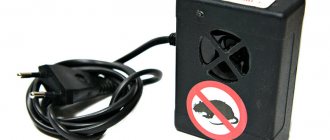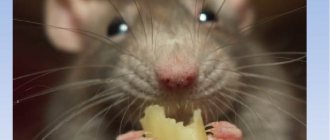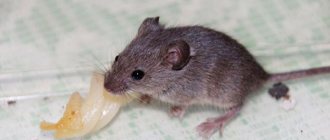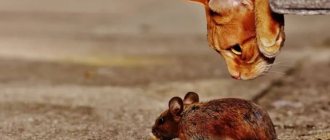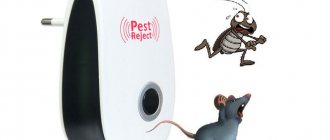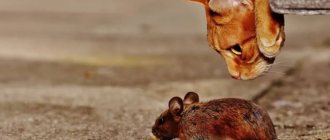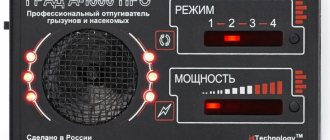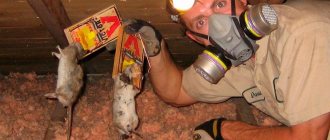Moving uninvited guests into an apartment or private property does not bode well for a pleasant neighborhood. People try to get rid of rodents as quickly as possible. Purchased mouse bait or a homemade trap does not guarantee their capture. It is important to know what to lure a mouse with.
What smell attracts mice - a strong, pleasant aroma of a natural and fresh product can lure a rodent into any trap.
Salo
When asked what mice love most, experts answer lard. Rodents can easily recognize high-calorie foods, which they can fill up quickly and for a long time. Lard is considered the most effective assistant in catching mice. To enhance its attractiveness, the treat is lightly fried with a match to make the smell more captivating. It is necessary to use fresh lard with an attractive aroma; the smell of old and stale lard repels them.
To save money, you can put the skin with the remaining lard in the rat trap. Such bait will not deteriorate for a long time and will retain an appetizing smell for the mouse.
Find and neutralize
Expert opinion
Evgeniy Koshalev
I dig in the garden at the dacha until the last rays of sunshine every day. No specialty, just an amateur with experience.
Catching a mouse is possible, although difficult. In this article I want to share with you the most effective baits that you can use to catch a mouse.
In order to catch a mouse correctly and quickly, you need to know where it most often lives. Mice are predominantly nocturnal pests; they do not have much intelligence or order in their pack. They shit where they sleep and live.
Here is a list of places that deserve maximum attention:
- along vertical surfaces;
- near the trash can;
- bottom cabinet drawers;
- under the furniture.
Nuts
Along with sunflower seeds, walnut kernels, peanuts or peeled hazelnuts are used as bait. The main thing is that they are without spices and flavorings.
Additional Information! Based on the list of treats that rodents love most, you can prepare an effective mixture for a mousetrap. You need to grind 1 oatmeal cookie, several corn sticks, a dozen peeled sunflower seeds and mix with 1 tsp. halva.
Busting the Cheese Myth
Everyone probably knows that mice are crazy about cheese, and any rodent will never refuse a good piece of cheese. However, as studies show, mice are quite indifferent to cheeses in general and to fermented milk products in particular. Almost all rodents eat plant foods , so you shouldn’t rely on mice running headlong to cheese as soon as they spot it in a mousetrap.
The mouse eats cheese in the same cases in which it pounces on sausage - when there is no alternative, and it really wants to eat.
In any other cases, the rodent's preference will be given to either seeds, bread and nuts, or butter and lard.
Mice eat cheese if there are no more tasty foods at hand.
However, a study by a group of English scientists was able to prove the love of cheese in mice. For three weeks, they placed three mousetraps in cages with mice: with apples, cheese and chocolate. And, oddly enough, mice were more likely to fall into “cheese” traps than into all others. Of course, the smell of cheese cannot be compared with apple and chocolate. Now, if they put meat or lard there, then the choice of a mouse would be obvious. Therefore, how to treat cheese is up to you.
As you can see, there are quite a few foods that mice like, and almost all of them are found in the kitchen. Therefore, if you want to quickly catch all the rodents, follow the tips described above and experiment.
Features of catching rodents
The choice of bait depends on the type of structure. If it has a hook, then it is necessary to attach a dense product (lard, sausage). The animal will pull the treat and the mousetrap will work. She will easily gnaw the seeds and nuts and run away. If the trap snaps shut due to the weight of the rodent, any bait can be used.
There are several types of devices for catching animals:
- A mechanical mousetrap includes metal elements attached to a rectangular wooden base. You need to securely attach the treat to the trigger lever. Insert the holder into it so that at the slightest contact it jumps off. The rodent follows the smell of the bait, touches it, and touches the trigger. The clamp slams shut, holding the victim tightly.
- A live trap allows you to release a caught mouse away from your home without harming it. Once in the trap cage, the door slams shut, and the mouse remains locked, with no chance of getting out.
- An electronic mousetrap kills a rodent with an electric shock. Such traps are effective for places where a large number of mice live (industrial premises, food warehouses). The device can be powered by mains or batteries.
- The repeller distributes high-frequency waves, making the presence of rodents uncomfortable. It dulls the animal’s instincts, creates uncomfortable living conditions, and forces it to leave the territory. Constant operation of the device will give the desired effect. Ultrasound is safe for people and pets. Such a device, installed in the attic or veranda, can even get rid of bats. Sometimes it is installed in greenhouses where jade vines are grown - a favorite delicacy of bats. The main thing is to use a high-quality device from a well-known class=”aligncenter” width=”960″ height=”720″[/img]
Advice! To catch mice, a device on a wooden base is used; for rats, a heavier metal structure is needed.
It’s easy to make a trap for an animal with your own hands from scrap materials. There are several ways to catch a rodent:
- Place a bucket of water at the edge of the tabletop, on which a sheet of paper with bait is placed. Half of it should lie on the table, and the second (with bait) should hang over the container with liquid. The mouse, under the influence of the smell, approaches the bait, the paper overturns, and the rodent falls into the water.
- A plastic bottle used as a mousetrap eliminates contact with the caught animal. You need to cut off the neck, put a treat on the bottom, and place the container horizontally on a table or shelf. Part of the bottle with bait should lie on the edge and hang down a little. The structure is attached to the table with a strong thread. When the rodent is trapped, the bottle falls under its weight and hangs on the rope.
- A glass jar is placed upside down on the edge of the coin, and bait is placed under the jar. The mouse follows it inside, the coin falls, and the container falls onto the neck, blocking the animal inside.
Interesting! To exterminate mice, an unusual mixture of flour with gypsum or alabaster in a 2:1 ratio has long been used. Near the places where rodents move, place 2 plastic lids, one of which contains this mixture, the other contains ordinary water. The mouse absorbs flour with plaster and washes it down with water. Alabaster or plaster, in contact with liquid, hardens right in the animal’s stomach, which is why it soon dies.
Baits are used to attract rodents into the trap, but are sometimes mixed with poisonous agents. The drug “Nutcracker” is considered the most effective means of fighting mice. Used indoors and outdoors. It does not have a pronounced odor, but attracts mice. The consistency resembles stiff dough or green plasticine.
A mouse poisoned by poison can die anywhere; it is not always possible to find it. A terrible smell will spread in the house, corpses may end up in hard-to-reach places, under floors, in holes, in cracks. In addition, such means of bullying are dangerous for children and pets.
Conclusion
The fight against rodents due to their large numbers is a long process. During it, the following methods and devices are used:
- Traps - mechanical traps, electric containers, live traps, nets.
- Baits are prepared from flour, grains, seeds, lard, sausage, and eggs. Products are placed in traps in their pure form, or mixed with poison and placed along the passages of animals.
- To prevent mice from getting used to the bait, it is changed every three days.
- Food used as bait must be fresh. Pests will not be attracted to spoiled food.
Bait is important when catching rodents. It helps to lure animals into traps and clear the house of parasites.
Catching mice with glue
A popular extermination method is the sticky trap. Special glue for catching rodents is sold in stores. It is applied to a sheet of cardboard, which is left in places where the rodent moves. One touch with the composition ensures a strong grip of the rodent with the trap, from which it will not detach.
It is not necessary to use bait for this trap; otherwise, it is recommended to place a non-perishable product (lard, a piece of bread dipped in vegetable oil) in the middle.
How to choose the right bait
Bait is placed in a trap for the purpose of catching or baiting animals. Lures are divided into two types:
- Food;
- poison and poisonous mixtures.
Bait is selected depending on the type of trap. If it is a snare or a trap, then solid pieces of food are used; if it is an adhesive coating, then bulk products (seeds, cereals) can be used.
It is recommended to add poisonous powders to food. Stores sell formulations based on grains, meat, and waxed briquettes. The bait is laid out in small parts throughout the area. Having eaten a piece, the pest dies on the spot or manages to go into the nest and die there.
Prepare your own mixture with quick-hardening dry building materials. The bait is mixed with alabaster. After eating it and drinking water, the rodent dies from the plaster hardening inside.
Note! When setting traps, there is no point in preparing toxic mixtures. It is enough to load the mousetrap with attractive bait.
To prevent the smell from pushing people away from food, you should prepare the bait correctly - wearing protective clothing and gloves.
Prevention
With the onset of cold weather, mice and rats move into people's homes in search of food and warm shelter. They live in barns, warehouses, attics, chicken coops, storage rooms, apartments and houses, where there is something to eat.
In order to prevent the appearance of rodents, you must follow the recommendations:
- sweep up crumbs on the kitchen floor and table;
- regularly take out the food waste bin;
- do not leave bags and containers with cereals and pasta open, and remove spilled grains in a timely manner;
- empty utility rooms of garbage and old rags;
- close the gaps between the wall and baseboards, next to the sewer pipes.
To effectively exterminate rodents, it is important to consider what kind of bait mice like. A suitable trap, knowledge of the behavior and taste preferences of cunning rodents, and installation of several traps are the main measures for catching gray pests. It’s easier to prevent rodents from entering your home than to hunt uninvited “neighbors.”
Harm
Mice bring a lot of trouble to people:
- they chew through bags and bags of cereals and flour;
- leave excrement among loose products;
- carry pathogens of dangerous diseases on their paws and fur;
- damage wires;
- scare household members;
- attack poultry, steal eggs;
- rustling at night in the pantry, under the stove, disturbing sleep;
- excrement scattered on the floor dries and releases substances that provoke allergic reactions.
Where to install the mousetrap?
It is advisable to install a device for catching pests in the evening. They do not like daylight, so they move in the dark. It is necessary to inspect baseboards, corners, cluttered areas, pantry and cellar.
The mousetrap should be placed near the minks. You can install devices near the walls, under the oven, behind household appliances, between the wall and the cabinet. If there are holes on the floor, then it is important to install a mousetrap there too. It is also suitable for the space between pipes and the wall.
Method number 2: flower pot
Required:
- a clay or plastic pot with a hole in the bottom; if the second option is used, then it is weighted with a weight;
- thread;
- match or toothpick;
- clip;
- bait;
- piece of plywood.
Making a trap:
- The pot is turned upside down on a sheet of plywood.
- The thread is pulled through the hole. A match is tied to the outside of the pot, and the bait is attached to the inside with a paper clip. The bait should hang almost at the very bottom.
- The upper edge of the pot is supported by a match with a thread tied to it.
- The structure is installed in a rodent habitat.
When the rodent reaches for the bait, the match will act as a trigger and the pot will cover the pest.
Recipes for preparing poison for rats with different baits and poisons
Generally speaking, recipes for poisoned baits for killing rats and mice can be very diverse; it is only important to adhere to the rules noted above when choosing a food base and observe the proportions indicated in the instructions for using the corresponding poison (so that the rat does not notice the danger).
Here are several ready-made recipes that have been tested many times in practice and in most cases give good results when fighting rats:
- 100 grams of minced meat (no matter meat or fish), 850 grams of crushed bread and 50 grams of Zookoumarin;
- 870 grams of crushed bread, 100 grams of onions fried in vegetable oil, and 30 grams of Ratindan;
- 890 grams of crushed bread, 100 grams of vegetable oil and 100 grams of Rat;
- 700 grams of crushed bread, 150 grams of mashed potatoes, 50 grams of vegetable oil and 30 grams of Ratindane;
- 990 grams of cool wheat or oatmeal porridge and 10 grams of Rat.
For these recipes, poisons are taken in the form of powders (dusts) - they are sold in hardware stores.
The ingredients of all recipes are simply mixed thoroughly and placed in portions of about a teaspoon in places where rats can easily find them.
On a note
There are also known folk recipes for poison for rats based on milk and alabaster, as well as those containing an infusion of chilibukha, an emetic nut, as an active ingredient. However, they are significantly less effective compared to poisons based on blood anticoagulants (which include Zookoumarin) and Krysida.
In addition, it should be borne in mind that today there are many ready-to-use poisoned baits for rodents on sale: in the form of dough briquettes, solid granules, poisoned grain, etc. It is often easier (and safer) to buy ready-made preparations than to make poisoned baits on one's own.
It is also useful to read: Methods of fighting rats in a private home
Attracting rats to traps
Often one of the main requirements for baits used in rat traps is a dense consistency. The fact is that in many traps you need to place a treat on a hook - the animal will pull it and release the corresponding mechanism. It is clear that minced meat or egg yolk are not suitable for such cases.
The second requirement is a strong smell. The rat, even being far from the trap, must inevitably want to try the treat and be ready to overcome its caution and fear.
The following rat baits have worked well in this regard:
- Smoked sausage;
- Cold smoked fish;
- Lard (ideally with the edge singed over the fire);
- Cheese (preferably smoked);
- A crust of bread, sprinkled with vegetable oil (preferably unrefined, strong-smelling).
The photo below shows an example of a mousetrap in which a rat was caught on a piece of sausage:
However, there are also traps that are triggered by the weight of the animal. They do not require the rat to pull the bait; it is only important to attract the pest and force it to climb inside the trap. In these cases, you can use not only the baits listed above, but also, for example, the following:
- Raw minced meat (preferably with onions);
- Roasted seeds or nuts;
- Chocolate.
It is also useful to read: Effective means for fighting rats and mice
If some bait does not attract rats or mice for more than three or four days (especially when the trap itself is set every night in a new place), then such bait must be replaced. In addition, even a well-functioning bait is useful to replace with a fresh one every day or two - its smell gradually weakens and it attracts rats less well.
This is especially important for tunnel traps (and other partially enclosed structures) - the aroma of the treat must be strong enough to escape from the trap and spread throughout the room, which happens more slowly than, for example, from open mousetraps.
Another important point that many rodent fighters do not take into account: at any stage of working with bait, it is highly recommended not to touch it with bare hands, otherwise the human smell will repel rodents.
Basic Rules
According to reviews, any of the listed products can be bait for mice in a mousetrap. But for the bait to be effective, you need to follow some rules:
- It is necessary to check the freshness of products.
- You should not put the same treats. For all traps you need to use different food.
- The position of the devices must be changed daily.
- If one feeding is ineffective, you should use another.
Such recommendations will allow you to quickly eliminate these gray pests from your home, which are dangerous to people.
